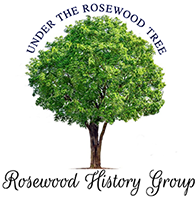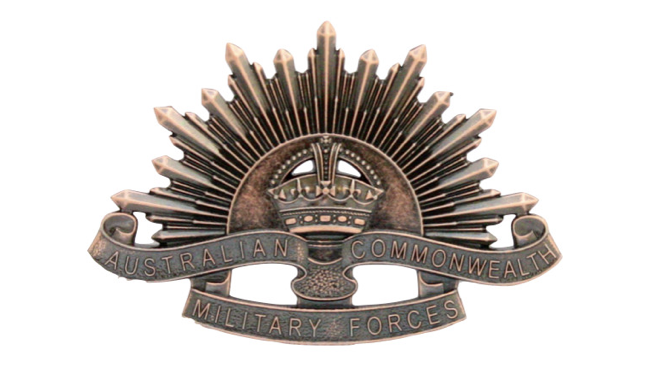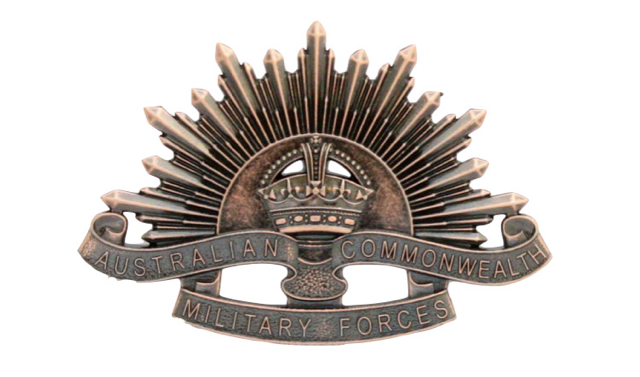Author: Edwin Habben O.A.M. R.F.D.

 Sergeant Vernon Akes, at the time of his application, indicated that he played rugby league for the last three years and that he had previous flying experience through the Queensland Aero Club. Prior to enlistment, he was residing with his parents at Albert Street, Rosewood. His physical description was that he was 5 feet 9 inches in height and weighed 157 pounds He had dark brown hair, brown eyes and a dark complexion. He stated that he was of the Church of England religion. He was enlisted into the Citizen Air Force of the R.A.A.F. on 16th August 1940 at No. 3 Recruiting Centre in Brisbane after giving an undertaking that he would serve for the duration of the war and an additional twelve months.
Sergeant Vernon Akes, at the time of his application, indicated that he played rugby league for the last three years and that he had previous flying experience through the Queensland Aero Club. Prior to enlistment, he was residing with his parents at Albert Street, Rosewood. His physical description was that he was 5 feet 9 inches in height and weighed 157 pounds He had dark brown hair, brown eyes and a dark complexion. He stated that he was of the Church of England religion. He was enlisted into the Citizen Air Force of the R.A.A.F. on 16th August 1940 at No. 3 Recruiting Centre in Brisbane after giving an undertaking that he would serve for the duration of the war and an additional twelve months.
Sergeant Vernon Akes was allotted the service number of 404393 and sent as a student on No. 2 course at No. 2 Initial Training School at Lindfield, New South Wales, during the period 18th August until 8th November 1940 to learn the basics of service life. After completing this course he was sent to No. 2 Elementary Flying Training School at Archerfield for basic aviation instruction on simple training aircraft. He was as a member of No. 2 Course at Archerfield that was conducted during the period 14th November 1940 until 8th January 1941. He then proceeded to No. 3 Service Flying Training School at Amberley as a member of No. 6 Course that was conducted during the period 13th January 1941 until 5th May 1941. The course at Amberley provided advanced training for pilots on single and multi-engined aircraft. Upon completing the course, he was awarded the Pilot Qualification Badge and promoted to the rank of Temporary Sergeant. He joined No. 3 Embarkation Depot at Sandgate the following day and then proceeded to No. 2 Embarkation Depot on 20th May 1941 prior to proceeding overseas to the United Kingdom via Canada on attachment to the Royal Air Force. He embarked by sea transport from Sydney in New South Wales on 4th June 1941 and disembarked in England on 1st August 1941 where he joined the No. 3 Personnel Despatch & Reception Depot at Bournemouth the same day. He joined No. 20 Operational Training Unit at Lossiemouth on 6th August 1941. At Lossiemouth he learned to pilot Vickers Wellington aircraft for night bombing and from there he joined No. 26 Conversion Flight at 15 Squadron, at Royal Air Force Station, Wyton. He finished his conversion course on Wellington bombers on 10th November 1941.
On 24th December 1941, Sergeant Vernon Akes was the pilot and captain of a No. 15 Squadron Royal Air Force Stirling I bomber N6066 with a crew of 8 that took off from Royal Air Force Station Waterbeach at 1435 hours for local flying practice. At 1445 hours whilst low flying, the aircraft struck a tree making it uncontrollable. The aircraft crashed at West End Farm, Kimpston near Bedford, and Vernon Akes died later that day of his injuries in the Bedford County Hospital. Five other members of his crew died. Three members survived one with serious injuries and two with slight injuries. At the time of his death, Vernon Akes was 23 years of age.
Sergeant Vernon Akes was buried at Wyton (St. Margaret and All Saints) Churchyard at Wyton, England, on 1st January 1942 at 3.00 p.m. At the request of the Chaplain General at the Air Board in Melbourne, the Rector of the Church of England at Southport paid a condolence visit to his parents. After his death, his personal effects were forwarded to his parents at Rosewood on the ship, “S.S. Sarbedon”. Missing from his personal effects was an engraved wristlet watch that had been given to him by his mother on his 21st birthday and which was one of his most prized possessions and also a civilian flying helmet that had also been presented to him. Despite numerous requests from his father, no trace of his watch was ever found. Enquiries at the Bedford Hospital found that he was not wearing a watch when admitted there. His flying helmet was inadvertently removed from his personal effects and this was subsequently found and returned to his parents. Such was the volume of personal effects being handled for deceased airman, errors were bound to occur. His father upon receiving his son’s personal effects found that pyjamas and a towel belonging to another member of his crew had been included amongst his son’s items.
An Accident Investigation was carried out to determine the reason for the crash. A Court of Enquiry Report on 24th February 1942 concluded that the primary cause for the accident was disobedience of orders by Sergeant Vernon Akes in that he carried out unauthorised low flying. A secondary cause was an error of judgement on the part of Sergeant Akes in that he struck a tree whilst carrying out low flying, making the aircraft uncontrollable.
Just prior to his death, his parents had forwarded parcels to him and on 16th March 1943. His father asked that any undelivered parcels be given to Sergeant Rick Jarman who had been in training with him. His father was advised that the parcels had been given to the Australian Red Cross and distributed by them. During his service, Sergeant Vernon Akes had flown a number of aircraft including the De Havilland 2760s, Ansons, Wellingtons and Stirlings. For his service in World War II, Sergeant Vernon Akes was awarded the Pilot Qualification Badge and the 1939/1945 Star, the War Medal, the Defence Medal and the Australian Service Medal 1939/1945. Vernon Akes’ name is commemorated on Panel No. 118 at the Australian War Memorial in Canberra.




